Picture this: dozens of vehicles moving in perfect formation down the highway, their synchronized movement creating an impressive display of coordination and purpose. A convoy of cars represents more than just multiple vehicles traveling together – it’s a powerful demonstration of organized transportation that serves countless purposes in our modern industry.
We’ve all witnessed these impressive processions at some point, whether it’s a military escort, emergency response team, or even a wedding party making their way to the ceremony. These coordinated vehicle formations have become increasingly common as we recognize their effectiveness for group travel, security, and ceremonial occasions.
Understanding how convoys work and when they’re most beneficial can transform the way we approach group transportation. From the basic principles of convoy formation to the exact protocols that ensure safety and efficiency, there’s much more strategy involved than meets the eye.
What Is a Convoy of Cars and Why Do They Form?
Vehicle convoys represent organized groups of cars traveling together in a coordinated formation along designated routes. These formations serve multiple purposes across various sectors and situations.
Definition and Basic Characteristics
A convoy of cars consists of multiple vehicles traveling in a sequential formation with coordinated timing and spacing between each unit. We observe these formations maintaining consistent speeds typically ranging from 45 to 65 mph depending on road conditions and convoy purpose. Professional convoy operations use exact vehicle positioning protocols where lead vehicles establish pace while support vehicles maintain predetermined distances of 150 to 300 feet apart.
Communication systems connect convoy participants through radio frequencies or digital messaging platforms to ensure real time coordination. Safety protocols require each vehicle to display identification markers such as flags, lights, or magnetic signs to distinguish convoy members from regular traffic. Drivers in these formations follow established hand signals and electronic communication methods to coordinate lane changes, stops, and emergency procedures.
Common Reasons for Car Convoy Formation
Military and Government Operations use convoys for transporting personnel, equipment, and sensitive materials across various distances. These operations prioritize security through coordinated movement patterns that reduce vulnerability during transit. Government agencies organize convoys for diplomatic missions, federal investigations, and inter agency cooperation efforts.
Emergency Response Teams form convoys to deploy resources quickly during natural disasters, medical emergencies, and crisis situations. Fire departments coordinate multiple apparatus convoys responding to large scale incidents requiring specialized equipment from different stations. Medical transport convoys move critical patients, organ transplants, and emergency supplies between healthcare facilities.
Commercial and Business Purposes drive convoy formation for equipment transportation, corporate events, and logistics coordination. Construction companies organize equipment convoys to move heavy machinery, materials, and workforce teams to project sites. Corporate entities arrange executive transport convoys for high profile events, client meetings, and business conferences.
Special Events and Celebrations create convoy opportunities for weddings, parades, and community gatherings. Wedding processions form decorative convoys featuring coordinated vehicle decorations and planned route timing. Funeral processions represent solemn convoy formations that honor deceased individuals while providing organized transportation for mourners.
Recreational and Group Travel motivates convoy formation for road trips, car club events, and tourism activities. Motorcycle clubs organize riding convoys for rallies, charity events, and group touring experiences. Car enthusiast groups create themed convoys for shows, meets, and scenic drive experiences.
Essential Planning Steps for Organizing a Car Convoy
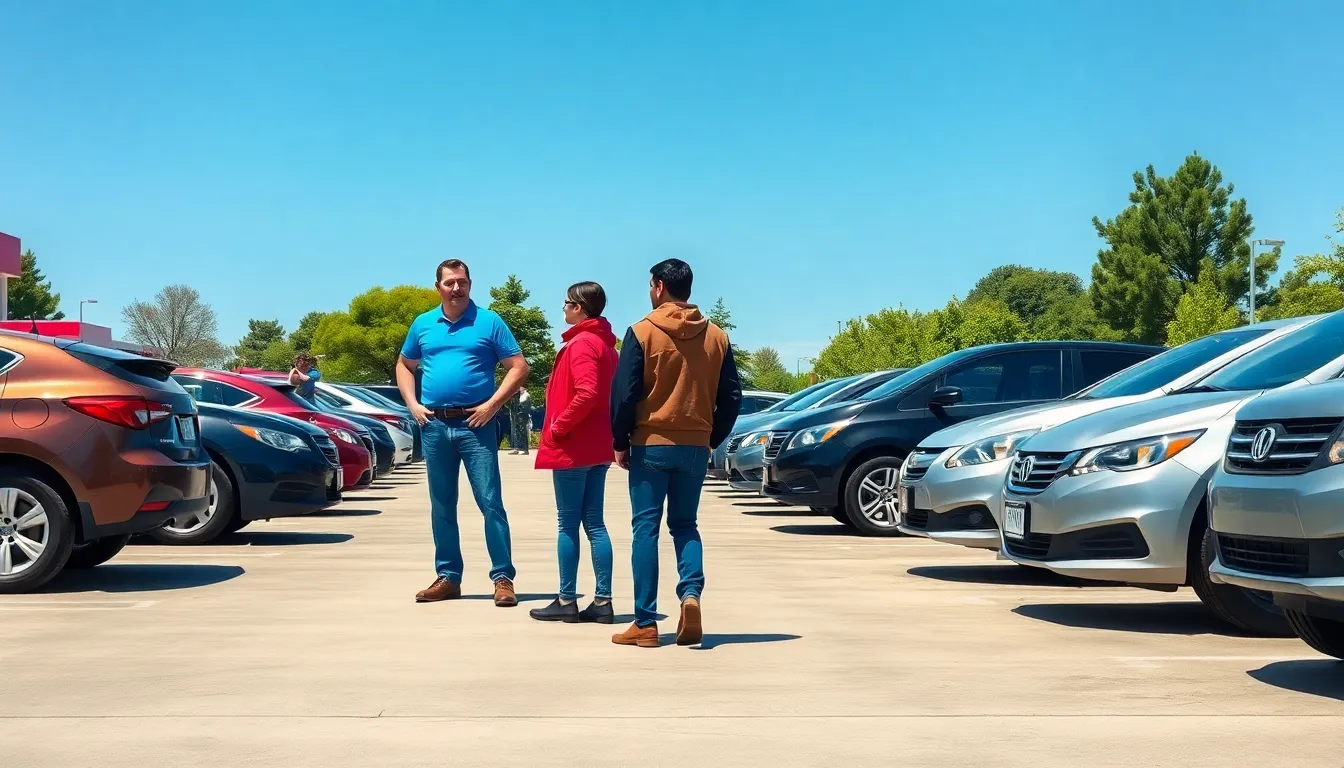
Successful convoy operations require meticulous preparation and coordination among all participants. We’ll guide you through the critical planning phases that ensure safe and efficient group travel.
Route Planning and Navigation Coordination
Primary route selection forms the foundation of convoy planning, requiring detailed analysis of highway conditions, traffic patterns, and potential hazards. We recommend choosing major interstates and highways with multiple lanes to accommodate convoy speeds between 45 and 65 mph while maintaining proper vehicle spacing.
Alternative route mapping provides essential backup options when unexpected road closures or traffic incidents occur. We identify at least two alternate paths for each segment of the journey, focusing on roads that can handle large vehicle formations without creating traffic disruptions.
Checkpoint establishment creates strategic stopping points every 50 to 75 miles for fuel, rest breaks, and convoy regrouping. We select locations with adequate parking space for all vehicles, clean facilities, and easy highway access to minimize formation delays.
Distance calculations help determine realistic travel times and fuel requirements for the entire convoy formation. We factor in reduced speeds during group travel, accounting for the time needed to maintain proper vehicle positioning and communication protocols.
Weather monitoring influences route decisions and departure timing, particularly for convoys traveling long distances. We check forecasts along the entire planned route and identify indoor shelter options at major checkpoints in case of severe weather conditions.
Communication Systems and Equipment Setup
Radio frequency coordination establishes clear communication channels for all convoy participants using CB radios or FRS/GMRS devices. We assign exact frequencies for different convoy segments, ensuring lead vehicles, sweep vehicles, and support teams can communicate without interference.
Communication protocols define standard procedures for routine updates, emergency situations, and convoy coordination messages. We establish clear call signs for each vehicle position, standardized phrases for common situations, and escalation procedures for urgent communications.
Equipment distribution ensures every vehicle has properly functioning communication devices before departure. We provide backup radios, spare batteries, and charging cables to prevent communication breakdowns during extended travel periods.
Signal testing verifies communication range and clarity between all convoy vehicles before beginning the journey. We conduct range tests at various distances, check for dead zones along the planned route, and establish relay procedures for vehicles that fall outside normal communication range.
Emergency contact systems connect convoy leaders with external emergency services and support personnel. We program important phone numbers into multiple devices, establish contact protocols with local authorities along the route, and designate exact individuals to handle emergency communications.
Safety Briefings and Emergency Protocols
Pre-departure meetings gather all drivers and passengers to review convoy procedures, safety requirements, and emergency protocols. We cover vehicle positioning rules, following distances of 50 to 100 feet between vehicles, speed limits, and lane change procedures for the entire formation.
Emergency response procedures outline exact actions for accidents, breakdowns, and medical emergencies during convoy travel. We assign roles to different vehicles, establish communication chains for emergency situations, and identify nearest hospitals and emergency services along the planned route.
Vehicle inspection requirements ensure all convoy participants meet safety standards before departure. We check tire conditions, fluid levels, brake systems, lighting equipment, and emergency supplies including first aid kits, reflective triangles, and basic repair tools.
Driver qualification standards verify that all convoy participants have valid licenses, adequate driving experience, and physical capability for extended group travel. We review driving records, discuss convoy experience levels, and pair inexperienced drivers with veteran convoy participants when possible.
Identification marking systems help other motorists recognize convoy vehicles and maintain formation integrity. We distribute magnetic signs, flags, or decals that clearly identify convoy participants while ensuring compliance with local vehicle marking regulations throughout our planned travel area.
Communication Methods Used in Car Convoys
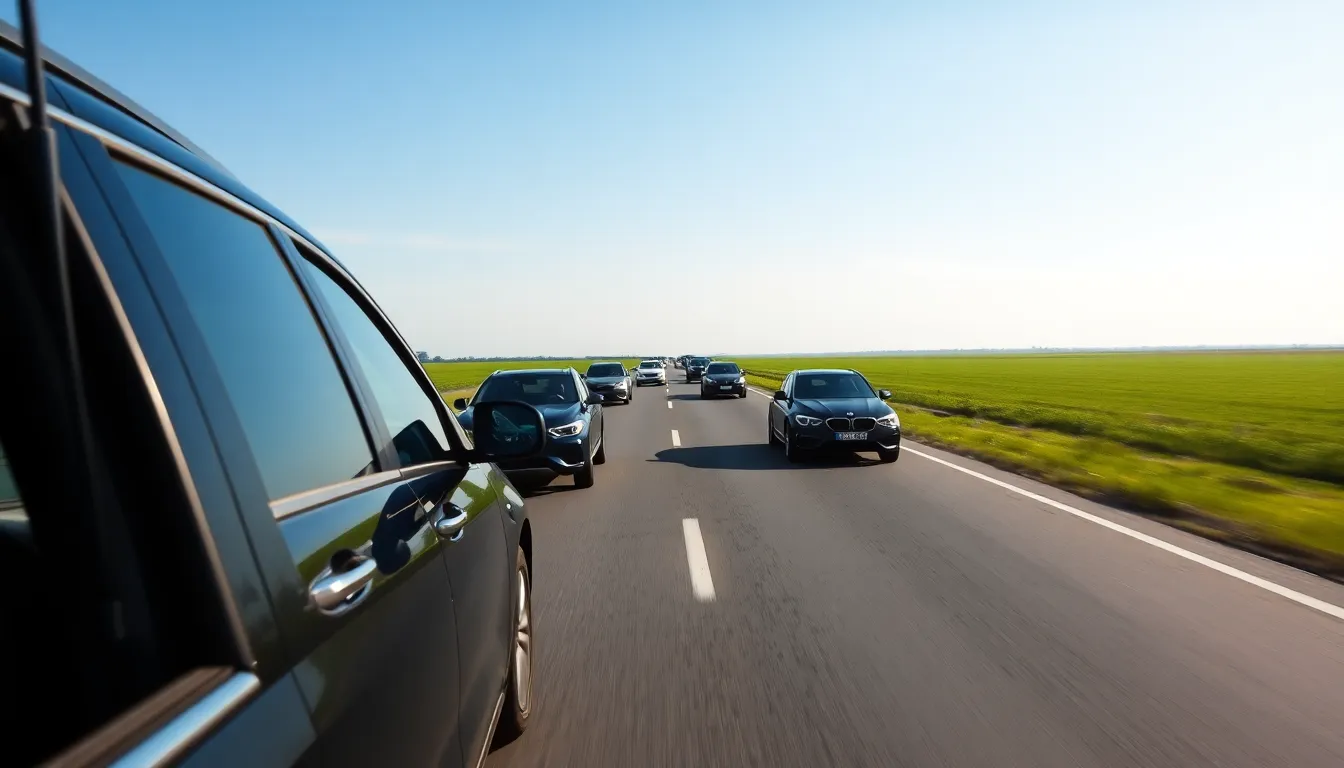
Effective communication systems form the backbone of successful convoy operations. We’ll explore the primary methods that ensure seamless coordination between vehicles traveling in formation.
Two-Way Radio Systems and Channels
Two-way radios remain the gold standard for convoy communication due to their reliability and instant connectivity. Professional convoy operators typically use UHF frequencies between 450-470 MHz for optimal range and clarity across distances up to 25 miles in open terrain.
Channel designation follows a structured hierarchy with the lead vehicle monitoring the primary frequency while support vehicles maintain secondary channels for internal coordination. Most organized convoys establish three distinct communication levels: command channel for leadership, operational channel for general updates, and emergency channel for urgent situations.
Radio etiquette becomes crucial during extended travel periods with participants using brief, clear transmissions to avoid frequency congestion. Standard protocols include vehicle identification numbers, directional references, and standardized terminology for common situations like lane changes, stops, and hazard alerts.
Battery life considerations require planning as continuous radio use during long-distance convoys can drain power sources within 8-12 hours. We recommend portable charging answers and backup battery packs to maintain communication throughout extended journeys.
Mobile Apps and Digital Coordination Tools
Smartphone applications offer modern alternatives to traditional radio systems with features like GPS tracking, group messaging, and real-time location sharing. Popular convoy coordination apps include Zello for push-to-talk functionality, WhatsApp for group messaging, and specialized trucking apps like CB Radio Chat.
GPS tracking capabilities allow convoy leaders to monitor vehicle positions in real-time through apps like Find My Friends or dedicated fleet management software. These digital tools provide visual representations of convoy formation and can alert leaders when vehicles fall behind or deviate from planned routes.
Group messaging platforms help coordination for non-urgent communications like rest stop updates, fuel requirements, and general announcements. Digital messages create permanent records of important information that participants can reference throughout the journey.
Data connectivity limitations present challenges in rural areas where cellular coverage becomes spotty or unavailable. We recommend hybrid communication strategies that combine digital tools with traditional radio systems for comprehensive coverage across all terrain types.
Hand Signals and Visual Communication
Visual signals provide essential backup communication when radio systems fail or during situations requiring immediate attention from nearby vehicles. Standard hand signals include raised fist for stop, circular motion for turn around, and pointing gestures for lane change directions.
Vehicle-mounted signal devices enhance visibility during convoy operations with amber flashing lights, LED message boards, and reflective markers helping maintain formation integrity. Professional convoys often use standardized lighting patterns that communicate exact messages to other convoy members and civilian traffic.
Flag and banner systems offer long-distance visual cues particularly effective for motorcycle convoys and ceremonial processions. Color-coded flags can indicate vehicle status, required actions, or emergency conditions visible from several car lengths away.
Hazard light coordination creates unified messaging when entire convoy sections activate emergency flashers simultaneously to alert surrounding traffic of convoy presence or changing conditions. This synchronized approach helps civilian drivers recognize convoy boundaries and adjust their driving accordingly.
Safety Rules and Best Practices for Car Convoys
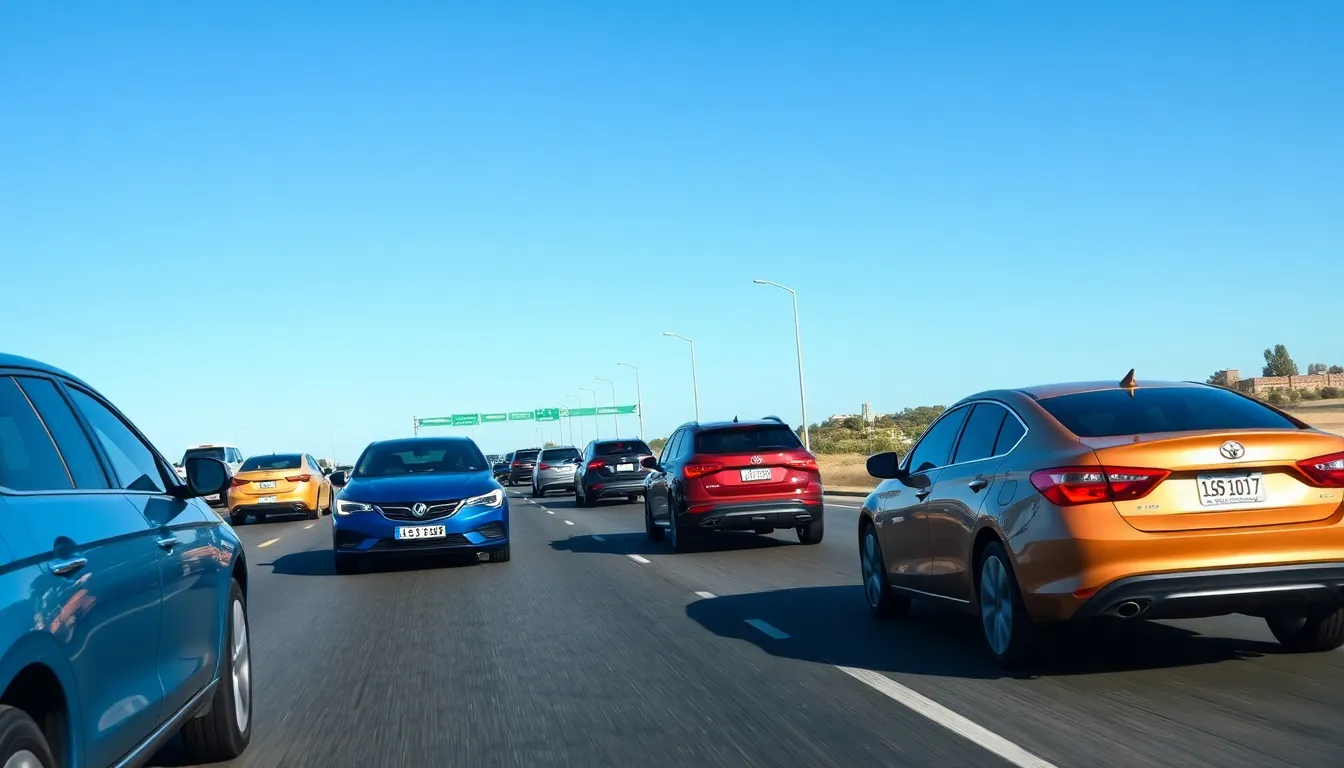
Successful convoy operations require strict adherence to safety protocols that protect both participants and other motorists. We’ve compiled essential safety rules that ensure smooth coordination while minimizing risks during group travel.
Maintaining Proper Following Distances
Safe following distances form the foundation of convoy safety protocols. We recommend maintaining a minimum 3-second gap between vehicles during normal driving conditions, which translates to approximately 200 to 300 feet at highway speeds. This spacing allows adequate reaction time for sudden braking or emergency maneuvers.
Increased spacing becomes critical during adverse conditions. We extend following distances to 4 to 6 seconds when rain, fog, or construction zones reduce visibility. Lead vehicles must signal early and brake gradually to give trailing units sufficient time to respond safely.
Vehicle positioning requires constant monitoring and adjustment. We use reference points like road markers, bridges, and mile markers to help drivers maintain consistent spacing. Radio communication allows real-time adjustments when gaps become too wide or narrow, preventing accordion effects that can cause rear-end collisions.
Emergency spacing protocols protect the entire formation. We establish predetermined signals for increasing following distances during high-traffic situations or when approaching congested areas. This proactive approach prevents chain-reaction incidents that could compromise multiple convoy vehicles.
Speed Control and Traffic Flow Management
Coordinated speed management ensures convoy unity and traffic safety. We maintain consistent speeds between 45 to 65 mph on highways, with the lead vehicle setting the pace based on traffic conditions and route requirements. Speed variations shouldn’t exceed 5 mph to prevent gaps from forming or closing too quickly.
Traffic integration requires strategic lane positioning. We typically occupy the right and center lanes on multi-lane highways, leaving the left lane available for faster-moving traffic to pass safely. This positioning reduces conflicts with regular motorists while maintaining convoy formation integrity.
Smooth acceleration and deceleration patterns prevent formation breakup. We communicate speed changes through radio channels before implementing them, giving all drivers time to adjust gradually. Sudden speed changes can create dangerous gaps or cause trailing vehicles to bunch up dangerously.
Traffic light coordination demands special attention in urban areas. We plan routes to minimize traffic signal encounters and establish protocols for when convoys get separated by red lights. Lead vehicles monitor upcoming signals and adjust speed to help more vehicles clear intersections together.
Weather and Road Condition Considerations
Weather monitoring influences convoy safety decisions throughout the journey. We check forecasts for the entire route before departure and monitor real-time conditions using weather apps and radio updates. Severe weather conditions like heavy rain, snow, or high winds may require convoy delays or route modifications.
Visibility reduction protocols protect convoy integrity during fog or storms. We activate hazard lights and reduce speeds to 35 to 45 mph when visibility drops below 500 feet. Additional following distance of 6 to 8 seconds becomes mandatory during these conditions to compensate for reduced reaction times.
Road surface conditions require immediate speed and spacing adjustments. We reduce speeds by 10 to 15 mph on wet pavement and increase following distances accordingly. Construction zones, gravel surfaces, and damaged roadways trigger enhanced caution protocols with radio updates about upcoming hazards.
Night driving safety measures include enhanced lighting and communication. We ensure all vehicles have functioning headlights, taillights, and marker lights before departure. Radio check-ins occur every 30 minutes during night operations to confirm all vehicles remain in formation and alert.
Legal Requirements and Regulations for Car Convoys
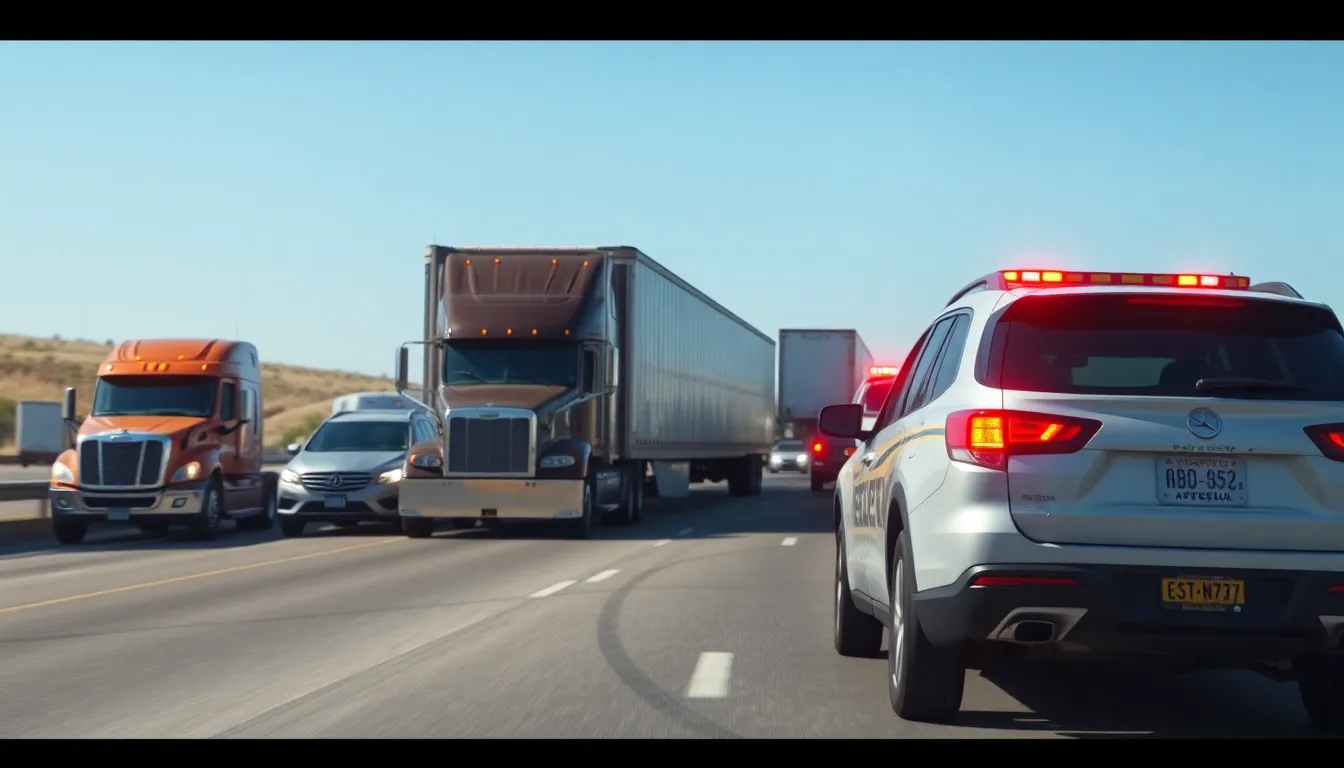
Legal compliance forms the foundation of safe and authorized convoy operations. We’ll explore the essential regulatory requirements that govern car convoys across different jurisdictions.
Permits and Authorized Escort Requirements
Commercial convoys require special permits when transporting oversized loads or hazardous materials through most states. We must obtain commercial vehicle permits through the Department of Transportation in each state where our convoy will travel. Application processes typically require 72-hour advance notice and cost between $15 to $100 per permit depending on the jurisdiction.
Oversized vehicle escorts become mandatory when convoy vehicles exceed standard length, width, or height restrictions. Professional escort services must accompany loads wider than 10 feet or longer than 80 feet on most interstate highways. These certified escort drivers operate specially marked vehicles with rotating amber lights and “WIDE LOAD” signage.
Military and government convoys operate under federal authority and don’t require state permits for official operations. But, we must coordinate with local traffic authorities for route planning and timing when possible. State police departments often provide courtesy escorts for large military movements through urban areas.
Special event permits apply to recreational convoys exceeding 25 vehicles in most metropolitan areas. Wedding processions, motorcycle rallies, and car club events require parade permits from local municipalities. Processing times range from 10 to 30 business days depending on the city’s permit office workload.
Traffic Laws and Right-of-Way Rules
Standard traffic laws apply to all convoy vehicles regardless of formation or purpose. We cannot exceed posted speed limits or violate traffic signals simply because we’re traveling in a group formation. Each driver remains individually responsible for their vehicle’s compliance with motor vehicle regulations.
Right of way rules don’t change for civilian convoys on public roadways. Emergency vehicles with active lights and sirens maintain priority over all convoy formations. We must yield appropriately and allow emergency responders to pass through our formation when necessary.
Lane usage restrictions affect convoy operations on multi-lane highways. Most states prohibit convoys from occupying more than two adjacent lanes unless specifically authorized by permit. Commercial convoys often receive designated lane assignments during peak traffic hours.
Following distance requirements increase for convoy vehicles in several jurisdictions. California and Texas mandate minimum 300-foot spacing between vehicles in commercial convoys exceeding 10 units. We must maintain these distances even when it breaks visual formation continuity.
Traffic signal compliance poses challenges for large convoys at intersections. The lead vehicle’s signal compliance determines the convoy’s legal passage through intersections. Trailing vehicles that enter on red signals face individual citations even though maintaining formation.
Insurance and Liability Considerations
Commercial general liability insurance becomes essential for organized convoy operations involving multiple parties. We recommend minimum coverage of $1 million per occurrence for events with 10 or more participating vehicles. Professional event organizers often require additional umbrella policies reaching $5 million in total coverage.
Individual auto insurance policies may exclude convoy activities depending on the carrier and policy language. Recreational convoys sometimes fall under standard personal auto coverage, but commercial or sponsored events often require special endorsements. We should verify coverage with insurance providers before convoy participation.
Liability distribution varies by convoy type and organization structure. Military convoys operate under federal tort claims coverage, while commercial convoys require fleet insurance policies. Special event organizers typically purchase event liability insurance to cover participant injuries and property damage.
Workers compensation requirements apply to paid convoy personnel including escort drivers, communication operators, and safety coordinators. Professional convoy services must maintain active workers compensation policies in all operating states. Independent contractors need their own professional liability coverage.
Cross-state insurance compliance creates additional complexities for multi-state convoy operations. We must verify that our insurance policies provide coverage in all states along the planned route. Some carriers exclude coverage in exact high-risk jurisdictions or require additional premium payments for extended travel.
Different Types of Car Convoys and Their Purposes
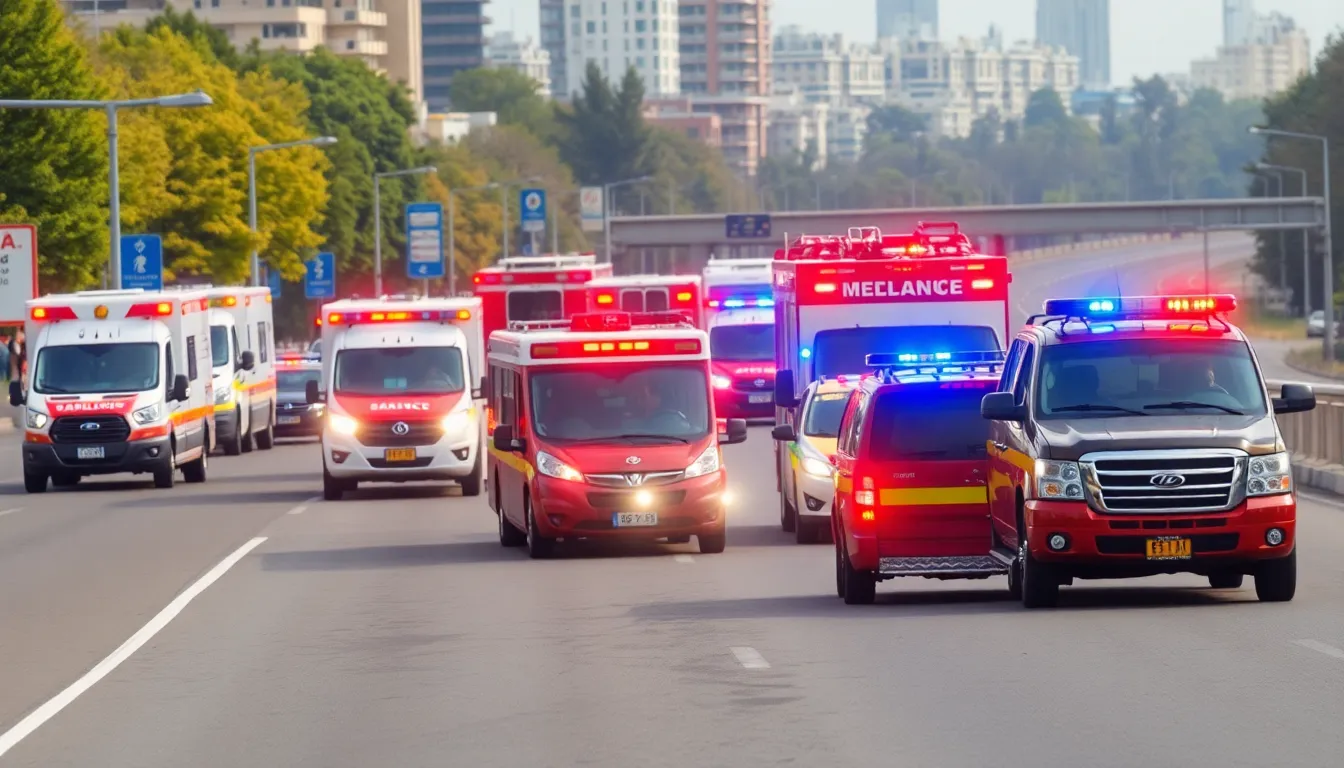
Car convoys serve distinct purposes across various sectors, each requiring specialized coordination and protocols. We’ll examine the three primary categories that demonstrate the versatility and importance of organized vehicle formations.
Emergency and Medical Transport Convoys
Emergency response convoys coordinate multiple vehicles to deliver critical services during crises and disasters. These formations typically include ambulances, fire trucks, police units, and support vehicles traveling together at speeds between 35-55 mph depending on urgency levels. Medical transport convoys often feature specialized equipment trucks carrying oxygen tanks, defibrillators, and emergency supplies alongside patient transport vehicles.
Disaster relief operations use convoy formations to transport humanitarian aid, rescue personnel, and medical supplies to affected areas. Organizations like the Red Cross and FEMA deploy convoys containing mobile command centers, water purification units, and field hospitals during natural disasters. These formations maintain radio contact on designated emergency frequencies and follow predetermined evacuation routes established by local authorities.
Hospital transfer convoys transport critically ill patients between medical facilities using coordinated vehicle formations. These operations include lead escort vehicles, multiple ambulances with life support equipment, and trailing support units carrying backup medical staff. Patient transport convoys maintain consistent speeds of 45-50 mph and use emergency lighting protocols to ensure safe passage through traffic.
Military and Security Vehicle Formations
Military convoys transport personnel, equipment, and supplies using heavily coordinated vehicle formations with strict security protocols. These formations typically consist of lead scout vehicles, main transport units, and rear guard vehicles maintaining 100-150 meter spacing intervals. Armed escort vehicles provide protection while communication trucks coordinate movement using encrypted radio systems.
Government security convoys protect high ranking officials and dignitaries during official travel and public appearances. These formations include armored vehicles, counter surveillance units, and emergency response teams traveling at predetermined speeds between 35-65 mph. Security convoys employ route reconnaissance vehicles that scout ahead for potential threats and traffic obstacles.
Law enforcement convoys coordinate multiple police units during large scale operations, prisoner transfers, and special events. These formations use marked patrol cars, unmarked surveillance vehicles, and specialized transport units depending on mission requirements. Police convoys maintain formation integrity using standardized radio protocols and follow exact traffic management procedures.
Recreational and Tourist Group Travels
Motorcycle rally convoys bring together enthusiasts for organized rides across scenic routes and destinations. These formations can include 50-200 motorcycles traveling in staggered formations at speeds of 45-60 mph with designated road captains leading each group. Rally convoys use hand signals, CB radios, and mobile apps to coordinate rest stops, fuel breaks, and navigation changes.
Car club convoys showcase vintage automobiles, sports cars, and specialty vehicles during organized tours and events. These recreational formations feature classic car collections, exotic vehicle showcases, and themed automotive gatherings traveling predetermined routes. Club convoys maintain slower speeds of 35-50 mph to accommodate older vehicles and provide opportunities for scenic photography stops.
Wedding and celebration convoys create ceremonial processions for special occasions and cultural events. These formations include decorated vehicles, limousines, and family cars following traditional routes between venues. Celebration convoys often feature lead vehicles with floral arrangements, music systems, and ceremonial decorations while maintaining speeds of 25-35 mph for visibility and safety.
Adventure travel convoys coordinate off road expeditions, camping trips, and cross country journeys for outdoor enthusiasts. These formations include SUVs, pickup trucks, and specialized adventure vehicles equipped with camping gear, spare parts, and emergency supplies. Travel convoys use GPS coordination, satellite communication devices, and established checkpoint systems for remote area navigation.
Equipment and Supplies Needed for Car Convoys
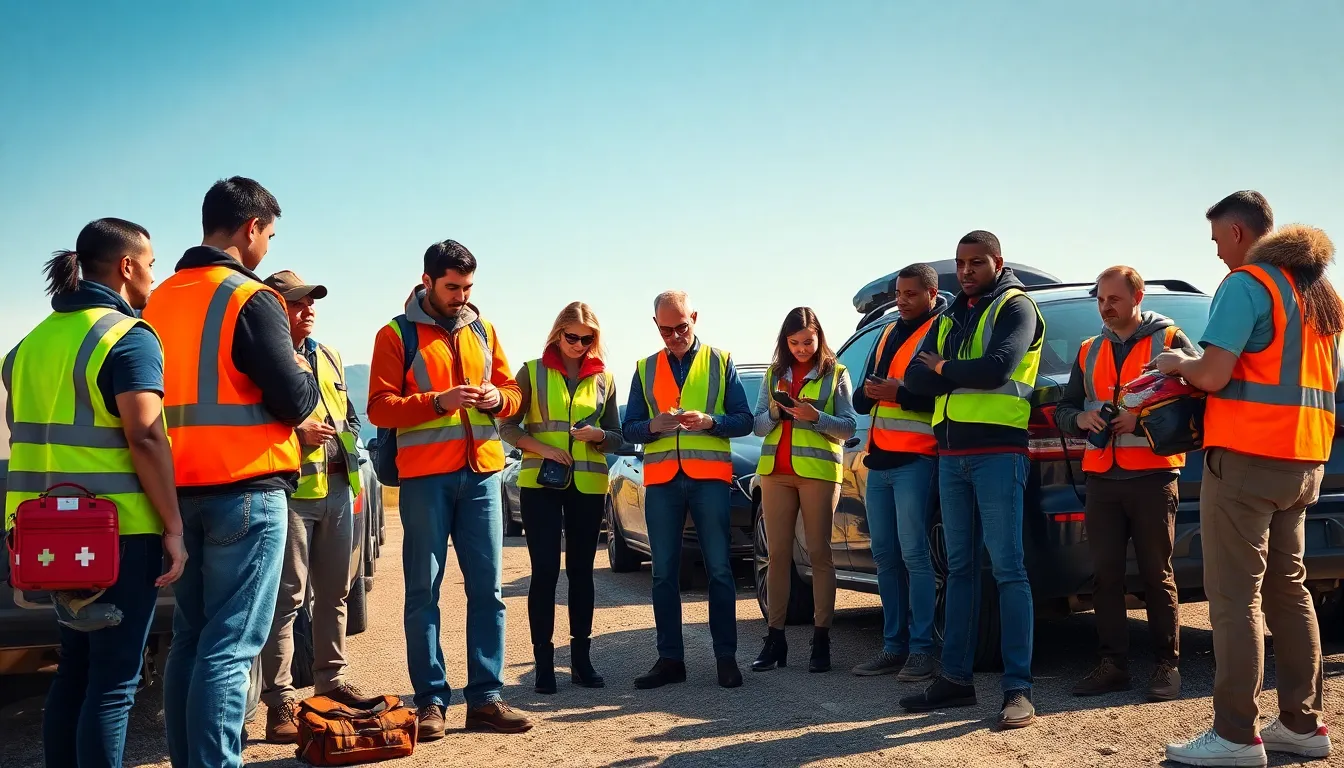
Successful convoy operations rely heavily on having the right equipment and supplies available to all participants. We’ve compiled essential items that ensure smooth coordination, safety, and preparedness during group travel.
Essential Safety and Emergency Gear
Emergency kits should include first aid supplies, flashlights, emergency flares, and reflective triangles in every convoy vehicle. We recommend carrying trauma kits with bandages, antiseptic wipes, pain relievers, and medical tape for treating minor injuries during travel. Fire extinguishers rated for automotive use become critical when mechanical failures occur in remote areas.
Reflective vests help convoy members remain visible during roadside stops and emergency situations. Orange or yellow high visibility vests with retroreflective strips meet safety standards and allow quick identification of convoy personnel. We suggest storing these vests in easily accessible locations within each vehicle.
Emergency lighting equipment includes portable LED flares, magnetic warning lights, and emergency strobe beacons. Battery powered devices eliminate the fire hazard associated with traditional road flares while providing 360 degree visibility. Magnetic base lights attach securely to vehicle surfaces and remain operational for 8 to 12 hours on a single charge.
Backup power sources such as portable battery packs and 12 volt adapters keep communication devices operational during extended travel periods. Solar charging panels provide renewable energy options for multi day convoy operations. We prioritize devices that can simultaneously charge multiple electronic components.
Navigation and Communication Tools
GPS navigation systems require backup devices and offline map capabilities for areas with limited cellular coverage. Handheld GPS units with preloaded topographic maps serve as primary navigation tools when smartphone signals become unreliable. We recommend units with 20 to 30 hour battery life and waypoint marking capabilities.
Two way radio equipment includes handheld transceivers with 2 to 5 watt transmission power and extended battery packs. FRS/GMRS radios provide reliable communication within a 2 to 20 mile range depending on terrain conditions. Base station antennas and vehicle mounted units extend communication range for lead and tail vehicles.
Communication accessories cover spare batteries, charging cables, antenna extensions, and headset adapters for radio systems. We stock lithium ion battery packs that maintain charge for 48 to 72 hours during active use. External antenna systems boost signal strength and clarity for vehicles traveling through mountainous or heavily forested regions.
Mobile applications like Zello, GroupMe, and specialized convoy coordination apps provide secondary communication channels. Digital mapping tools with real time traffic updates help convoy leaders adjust routes based on current road conditions. We install offline GPS applications that function without cellular data connections.
Vehicle Maintenance and Breakdown Supplies
Basic tool sets should contain socket wrenches, screwdrivers, pliers, and adjustable wrenches for common roadside repairs. Tire pressure gauges, jumper cables, and multi meters help diagnose and resolve electrical issues. We pack tool kits in waterproof containers to prevent corrosion during extended outdoor storage.
Automotive fluids include motor oil, coolant, brake fluid, and windshield washer solution in sealed containers. Emergency fuel containers with 5 to 10 gallon capacity provide backup fuel supplies for convoy vehicles. We recommend carrying transmission fluid and power steering fluid for vehicles with high mileage.
Tire repair equipment consists of tire plug kits, portable air compressors, and tire pressure monitoring tools. Compact 12 volt air compressors inflate tires from flat to full pressure in 3 to 8 minutes. We suggest carrying tire sealant compounds that temporarily repair punctures up to 6mm in diameter.
Towing and recovery gear includes tow straps rated for 10,000 to 20,000 pound capacity, shackles, and recovery hooks. Portable winches with wireless remote controls assist in vehicle extraction from ditches or soft terrain. We pack recovery boards and sand ladders for traction assistance in snow, mud, or sand conditions.
Common Challenges Faced by Car Convoys
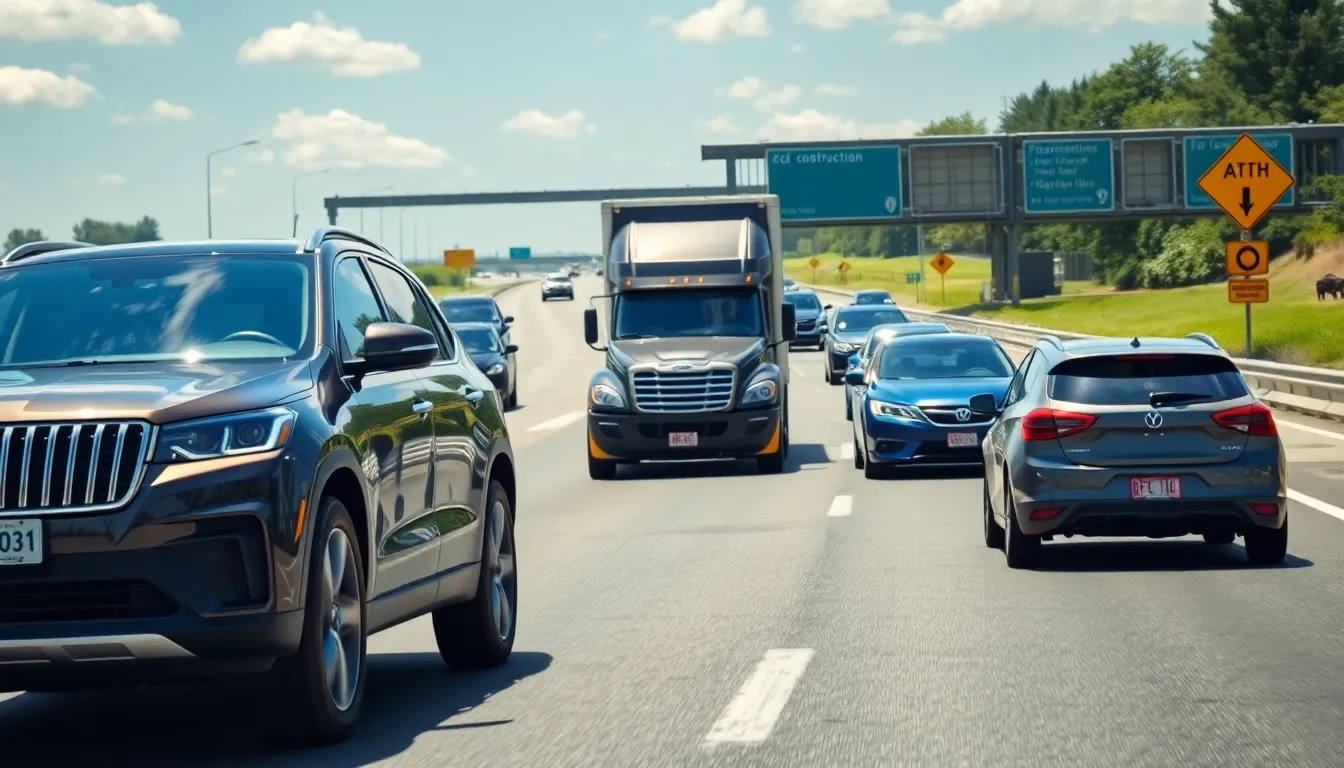
Even well-planned convoys face many obstacles that can compromise safety and coordination during travel. We’ve identified the most important challenges that convoy organizers must prepare for and address proactively.
Traffic Congestion and Route Disruptions
Traffic jams present the greatest operational challenge for maintaining convoy formation and timing. Construction zones force convoys to merge into single lanes, often separating vehicles across multiple miles of highway. Rush hour congestion in metropolitan areas can stretch planned 4-hour journeys into 8-hour ordeals.
Accident-related lane closures create immediate coordination problems when lead vehicles pass through before backup traffic develops. Bridge construction and road closures require last-minute route changes that may not accommodate larger convoy vehicles. Interstate detours through unfamiliar surface streets challenge drivers who relied solely on highway navigation planning.
Emergency vehicle access becomes complicated when convoys occupy multiple lanes during traffic slowdowns. School zones and pedestrian areas impose speed restrictions that disrupt convoy timing schedules. Special events like parades or sporting events create unexpected road closures that aren’t reflected in standard GPS routing systems.
Vehicle Breakdowns and Mechanical Issues
Mechanical failures within convoy formations create cascading coordination problems that affect all participants. Engine overheating becomes more common during convoy travel due to extended highway speeds and reduced airflow in formation driving. Tire failures pose immediate safety risks when vehicles can’t safely exit formation to reach roadside assistance.
Fuel efficiency drops significantly during convoy operations due to increased air resistance and stop-and-go traffic patterns. Older vehicles struggle to maintain consistent speeds required for formation integrity over long distances. Transmission problems develop more frequently when drivers unfamiliar with convoy procedures over-rev engines during coordination maneuvers.
Battery failures in communication equipment leave vehicles isolated from convoy coordination just when navigation becomes most critical. Brake system issues become dangerous when following distances shrink during congested highway conditions. Cooling system failures increase dramatically during summer convoy operations in desert regions where ambient temperatures exceed 100°F.
Weather-Related Complications
Sudden weather changes pose the most unpredictable challenges for convoy safety and coordination effectiveness. Rain reduces visibility below safe following distances while road spray from other convoy vehicles creates additional visibility obstacles. Snow and ice conditions make formation driving extremely hazardous when vehicles have different tire configurations and traction capabilities.
Wind gusts affect high-profile vehicles like RVs and trucks differently than passenger cars, creating dangerous speed variations within formations. Fog conditions require convoy modifications to increase following distances and reduce travel speeds by 25-30 mph below planned rates. Severe thunderstorms force convoy delays when lightning makes radio communication dangerous and hail threatens vehicle damage.
Temperature extremes create mechanical stress on convoy vehicles that wouldn’t occur during normal individual travel. Desert heat causes tire pressure increases that can lead to blowouts, while extreme cold affects battery performance and fuel efficiency. Seasonal weather transitions create unpredictable road conditions when convoy routes cross multiple climate zones during single-day travel periods.
Technology Solutions for Modern Car Convoys
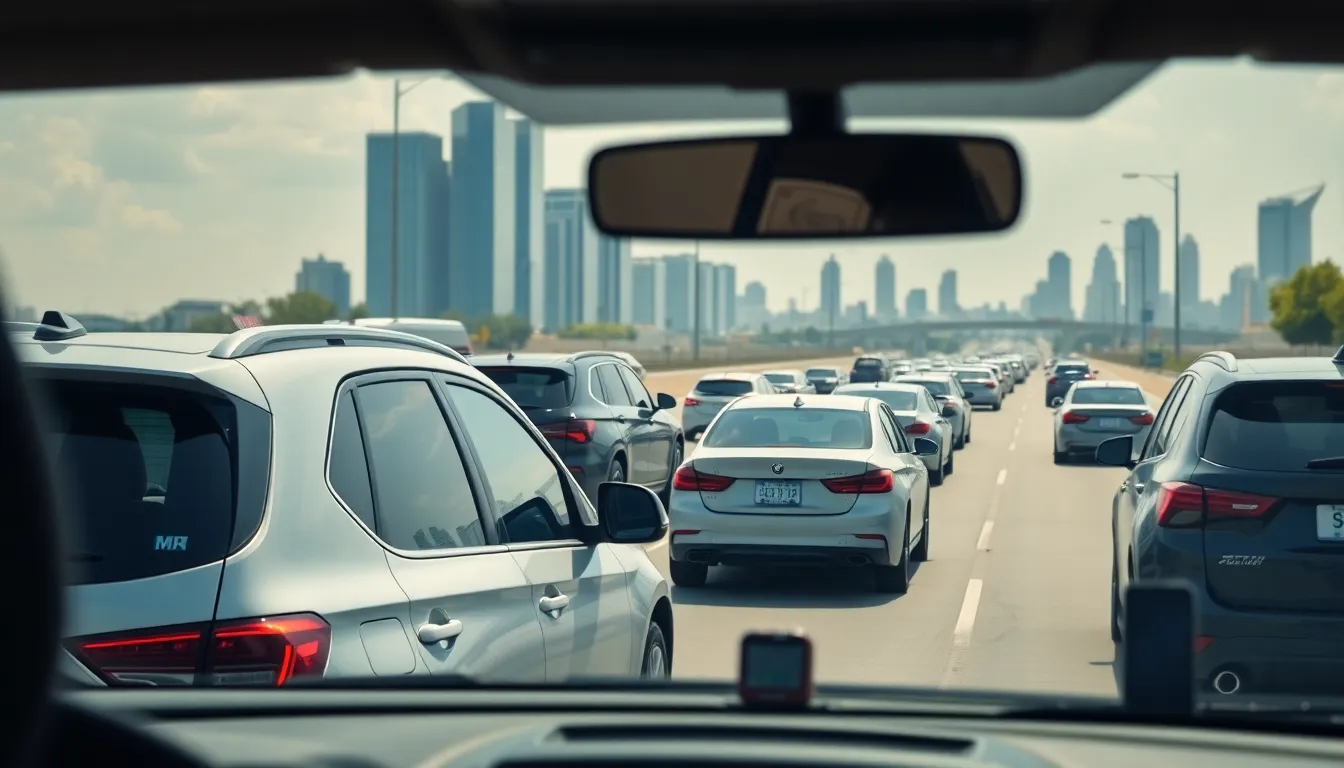
Modern technology transforms how we coordinate and manage car convoys today. Digital answers streamline operations that once required extensive manual coordination and guesswork.
GPS Tracking and Fleet Management Systems
GPS tracking systems provide real time location data for every vehicle in our convoy formation. Fleet management platforms like Samsara and Verizon Connect display vehicle positions on centralized dashboards that convoy leaders monitor continuously. These systems calculate estimated arrival times with 95% accuracy and automatically adjust for traffic delays or route changes.
Vehicle speed monitoring ensures all convoy members maintain coordinated travel speeds between 45 and 65 mph. Geofencing alerts notify organizers when vehicles deviate from predetermined routes or stop unexpectedly. Route optimization algorithms suggest the most efficient paths based on current traffic conditions and convoy size requirements.
Driver behavior analytics track harsh braking events, rapid acceleration patterns, and excessive idling times. Fleet managers receive instant notifications about potential safety concerns or mechanical issues developing within the convoy. Historical data reports help improve future convoy planning and identify recurring operational challenges.
Real Time Traffic and Weather Updates
Traffic monitoring systems deliver instant updates about congestion patterns, construction zones, and accident locations along convoy routes. We integrate services like Waze for Business and INRIX Traffic Intelligence to provide comprehensive roadway condition assessments. These platforms identify backup routes automatically when primary roads become impassable or heavily congested.
Weather radar integration shows precipitation patterns, visibility conditions, and temperature changes affecting convoy safety. National Weather Service alerts stream directly to convoy communication systems when severe weather threatens planned routes. Meteorological data helps determine optimal departure times and suggests weather related speed adjustments.
Road surface condition sensors detect ice formation, flooding risks, and pavement quality issues that impact convoy travel. Smart traffic light systems in some metropolitan areas provide convoy priority signals to maintain group cohesion through intersections. Construction zone databases update hourly with lane closure information and estimated completion times.
Automated Communication Networks
Automated communication networks eliminate manual radio coordination through digital messaging systems and voice over internet protocol connections. Mesh network technology creates redundant communication pathways that function even when cellular towers experience outages. These networks automatically route messages through the strongest available signal sources within the convoy formation.
Voice recognition software converts spoken commands into text messages distributed across all convoy vehicles simultaneously. Automated status updates broadcast vehicle fuel levels, mechanical alerts, and driver check in confirmations every 30 minutes. Emergency beacon activation triggers immediate location sharing and distress signal distribution to all convoy participants.
Integration with traffic management centers provides direct communication channels with highway patrol units and emergency response teams. Automated translation services support multilingual convoy operations where participants speak different languages. Cloud based backup systems preserve all communication logs and GPS tracking data for post convoy analysis and regulatory compliance reporting.
Tips for Joining or Leading a Car Convoy
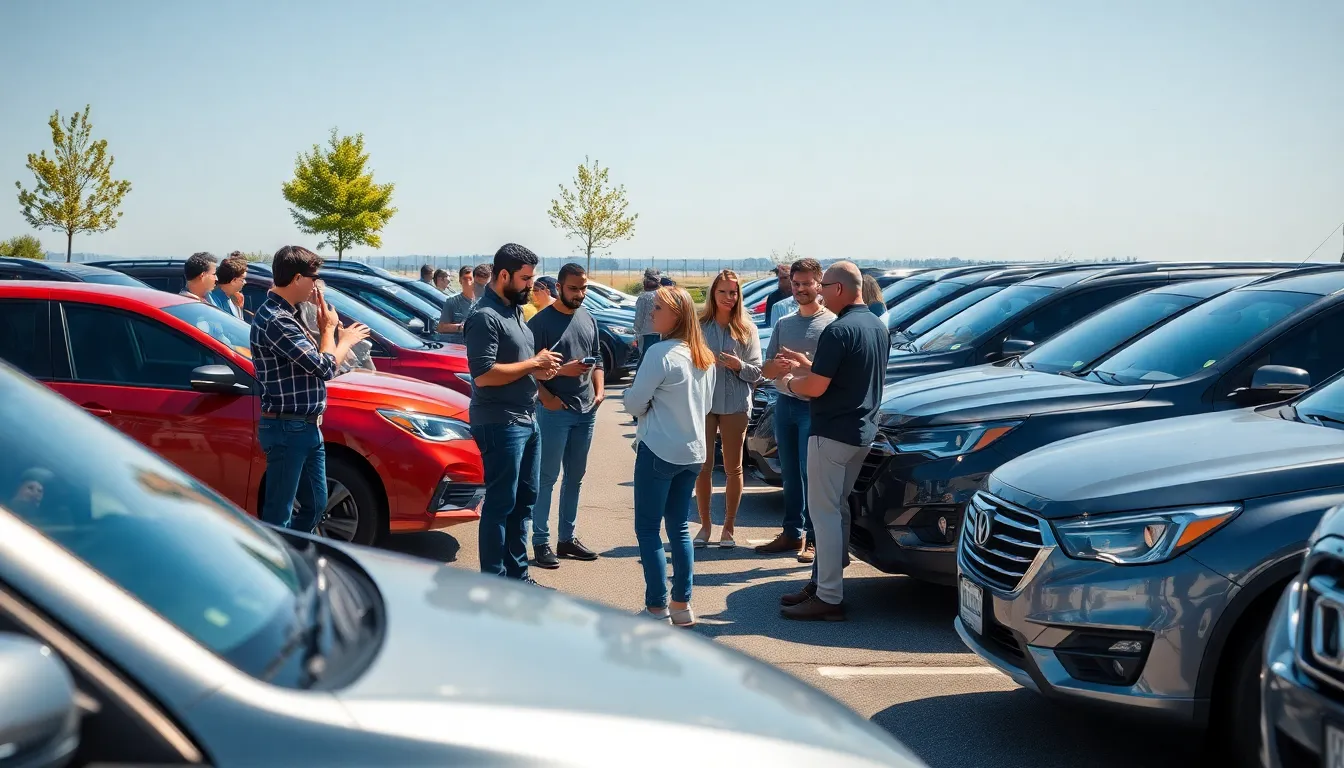
Participating in a car convoy requires careful preparation and clear understanding of your role within the group. Whether you’re leading the formation or following other vehicles, these practical tips will help ensure a safe and coordinated journey.
Preparation and Vehicle Readiness Checks
Check your vehicle’s mechanical systems thoroughly at least 24 hours before departure. Engine fluid levels including oil, coolant, and brake fluid should be inspected and topped off as needed. Tire pressure should match manufacturer specifications, with a spare tire properly inflated and accessible.
Test all communication equipment to verify proper operation before convoy formation. Two-way radios should be charged and programmed to designated frequencies. Mobile phones need full battery charges with backup power banks available for extended travel periods.
Fuel tanks should be completely filled before joining the convoy formation. Calculate fuel consumption based on convoy speeds and distance to ensure adequate reserves. Emergency supplies including first aid kits, reflective triangles, and basic tool sets must be easily accessible within your vehicle.
Document all essential information including convoy route details, emergency contact numbers, and checkpoint locations. Driver licenses, vehicle registration, and insurance documents should be current and readily available for inspection.
Understanding Roles and Responsibilities
Lead vehicles establish the pace and make critical navigation decisions for the entire convoy. They monitor traffic conditions, communicate route changes, and coordinate stops for fuel or emergencies. Lead drivers maintain constant radio contact with convoy coordinators and handle interactions with law enforcement.
Sweep vehicles travel at the rear to assist with breakdowns and ensure no convoy members fall behind. They carry additional emergency equipment and maintain communication with struggling vehicles. Sweep drivers coordinate with lead vehicles about convoy spacing and formation integrity.
Follow vehicles maintain proper positioning within the designated formation and respond promptly to radio communications. They observe traffic patterns around the convoy and report hazards or concerns to leadership. Follow drivers avoid independent lane changes or speed variations that disrupt convoy coordination.
Radio operators help clear communication between all convoy participants using established protocols. They relay important information about route changes, traffic conditions, and emergency situations. Operators maintain radio discipline by using concise messages and proper identification procedures.
Etiquette and Group Coordination Skills
Maintain consistent following distances of 3 to 4 seconds behind the vehicle ahead during normal conditions. Increase spacing to 6 seconds or more when weather reduces visibility or road conditions deteriorate. Avoid closing gaps aggressively that could separate convoy sections or create safety hazards.
Use standardized radio terminology to ensure clear communication throughout the convoy. Identify yourself with vehicle position numbers such as “Vehicle 3” rather than personal names. Keep transmissions brief and wait for acknowledgment before continuing with additional information.
Signal intentions clearly using both electronic communication and visual indicators. Turn signals should activate well in advance of lane changes or exits. Hand signals provide backup communication when radio systems fail or during complex maneuvering situations.
Respect other motorists by maintaining courtesy and following traffic laws throughout the journey. Allow non-convoy vehicles to merge safely between convoy sections when necessary. Avoid blocking traffic lanes unnecessarily or creating rolling roadblocks that frustrate other drivers.
Coordinate rest stops efficiently by communicating needs in advance and selecting appropriate facilities. Plan stops at locations with adequate parking for all convoy vehicles. Establish departure times clearly and conduct headcounts to ensure all participants rejoin the formation before continuing travel.
Conclusion
Whether you’re planning a recreational road trip or organizing a professional transport operation understanding convoy dynamics is crucial for success. We’ve covered everything from essential communication systems and safety protocols to legal requirements and modern technology answers that make these coordinated journeys possible.
The key to any successful convoy lies in thorough preparation proper equipment and clear communication among all participants. By following established protocols maintaining adequate following distances and staying prepared for unexpected challenges you’ll ensure both safety and efficiency throughout your journey.
Car convoys continue to serve vital roles across military commercial emergency response and recreational contexts. With the right knowledge and preparation your next group travel experience can be both safe and memorable while maintaining the coordination that makes convoys so effective on today’s highways.
Frequently Asked Questions
What is a car convoy?
A car convoy is an organized group of vehicles traveling together in a coordinated formation along designated routes. These formations typically maintain speeds of 45-65 mph and use specific positioning protocols, communication systems, and safety measures like identification markers to ensure safe and efficient group travel.
Why do vehicles form convoys?
Vehicles form convoys for various reasons including military and government operations for secure transport, emergency response for rapid resource deployment, commercial logistics coordination, special events like weddings and parades, and recreational group travel such as road trips and motorcycle rallies.
What communication methods are used in car convoys?
Car convoys primarily use two-way radio systems with structured channel designations and proper radio etiquette. Mobile apps with GPS tracking and group messaging serve as additional tools, while hand signals and visual communication methods provide essential backup when radio systems fail.
What safety rules should car convoys follow?
Convoys must maintain proper following distances (minimum 3-second gap), practice coordinated speed management, and use strategic lane positioning. Additional safety measures include weather condition protocols, visibility reduction procedures, road surface adjustments, and special night driving safety measures.
Do car convoys need special permits?
Commercial convoys, especially those transporting oversized loads or hazardous materials, typically require permits and professional escorts. Recreational convoys generally don’t need permits but must comply with traffic laws, right-of-way rules, and maintain adequate insurance coverage for all participating vehicles.
What equipment is essential for convoy operations?
Essential equipment includes safety gear (first aid kits, reflective vests, emergency lighting), communication tools (two-way radios, GPS systems), and vehicle maintenance supplies (basic tool sets, automotive fluids, tire repair equipment, towing gear). Emergency identification markers are also crucial for convoy recognition.
What are common challenges faced by car convoys?
Common challenges include traffic congestion and route disruptions, vehicle breakdowns that create coordination problems, weather-related complications affecting visibility and road conditions, and construction zones that hinder convoy formation and timing. Proactive planning helps mitigate these obstacles.
How can technology improve convoy coordination?
Modern technology enhances convoys through GPS tracking and fleet management systems providing real-time location data, speed monitoring, and route optimization. Real-time traffic and weather updates inform convoy leaders of changing conditions, while automated communication networks streamline messaging and maintain connectivity.



